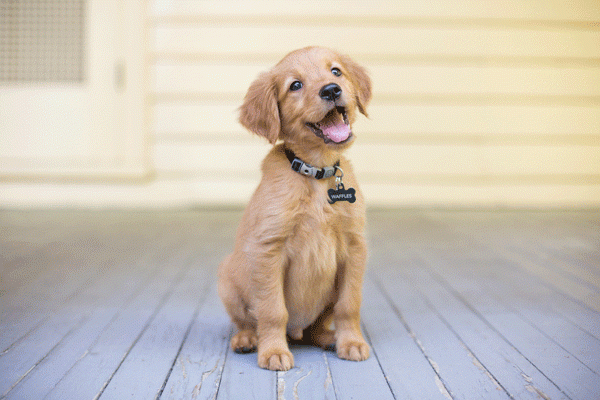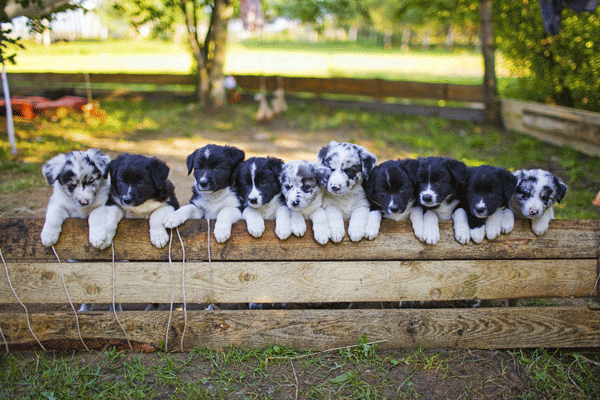Puppies and dogs do not arrive in our lives already understanding our house rules. If you have a new dog in your life, spend time now laying down a foundation that will serve both of you for the rest of the dog’s life.
Month one
This is the most critical month of your dog’s life. Immediately schedule a wellness exam with your veterinarian, and get the first or second round (sometimes breeders/shelters have already given the first round) of vaccinations for your 8-week or older puppy. It is now illegal in some states to sell or give away a puppy younger than 8 weeks old, so insist that the puppy is permitted to stay with and learn from the mother dog and siblings until at least 8 weeks of age. Bring quality meat or cheese treats for the puppy at every vet visit. Once he’s had that first round of vaccines, start taking your puppy to safe places for life socialization, like a neighbor’s house with young children; a clean, well-run dog training center; and local shops that permit dogs. Don’t take unvaccinated puppies to areas that have had a ton of dog traffic like parks or dog retail stores.

Puppy brains are still growing, and we know from research that there is a limited time to introduce a growing brain to new things, people, and events. In puppies, we generally have the first 12 weeks of life to give them positive exposure to the human world (some studies indicate that 16 weeks is the cut-off time). By the time your puppy comes into your home, eight weeks of learning time has gone by, so you are starting out behind unless you happened to get a pup from a great breeder/shelter who invested in proper socialization.
This first month is when to slowly and positively introduce your growing puppy to as many new things as you can find, including small children, men with beards, people wearing large hats or walking with canes, different surfaces, many new friendly puppies (with a minimum of one round of vaccinations), and nonthreatening older dogs, car rides, etc. Strive to introduce your puppy to five new stimuli a day spread throughout the day. He won’t have mastered new, potentially scary things with just one intro, so he’ll need several repetitions that are paired with something fun or yummy. Never force a new situation, person, or thing on your puppy. Allowing him to choose to sniff and greet a new situation builds a confident and resilient dog. Force is never a wise choice in any animal training, and it is especially detrimental to young animal brains.
Did you know that both human babies and puppies must learn that touch itself is not aversive? If we miss that crucial time to have a puppy learn that a human touch is a comfort and not a threat when the dog is very young, sometimes we might never be able to reach inside of the dog’s mind and convince him that touch is a good thing. We call these dogs feral.
Regarding house training, I take a puppy outside every few hours, and that includes overnight. I work hard to simply not create a situation where the puppy has to go to the bathroom and the only option is in the house. I reward like crazy when the dog goes outside. I keep the young pup with me 24/7 for the first two days, and I find over and over again that I have a housetrained dog within 48 hours, if done in this manner.
Month two
Once your puppy has that first round of shots, enroll him in a force-free, positive reinforcement puppy class with a credentialed and experienced dog trainer who keeps a clean training center. Yes, this means your 8-week old puppy can be enrolled in a puppy socialization class. You have so much socialization work to do the first few weeks when little Rover comes home that it often takes until the second month for you to find a puppy class. Definitely get that puppy in a class before he hits the 12-week mark. Learning doesn’t stop at 12 weeks, so training is crucial for all dogs and especially for all young dogs. Why have I spent so much time talking about life socialization versus obedience training? Puppies need both, of course, but first and foremost they need to have a kind, compassionate, and wise human life guide to ease them into our human world. I beg owners to put a premium on socialization, but you can train in small increments at the same time.

Important skills
Based on two decades of feedback from my human clients, here are some of the most important obedience skills to teach your dog. I begin training the puppy the day he arrives, but I do so in very small time increments, and I work the training into and around life socialization.
Sit: Dogs can’t do many unwanted things — like jumping on people — and also be sitting. Sit is a simple but crucial cue. Look for countless times throughout the day when the puppy offers a sit, and reward that!
Come: A reliable recall can literally save your dog’s life. Please know that off-leash work is graduate-level work. Go through all the grades of learning, and teach skills first on-leash. Only move on to off-leash when skills are highly reliable on-leash.
Leave it: Puppies and dogs explore the world nose-first and then sometimes put things in their mouths because it smells great to them or they want to learn more about it. A solid “leave it” can truly be a lifesaver for your dog, as it was for me when one of my dogs started to lick up an ibuprofen pill I didn’t know had fallen under the bed.
Dog relationships: Protect your puppy from rude canine greetings. Ensure that that the young dog plays with and meets other well-mannered dogs and puppies before that magical 12-week period.
Puppies really are a lot of work! It is so worth it for the lifetime of your best friend to put the time now into socialization and education.





